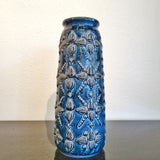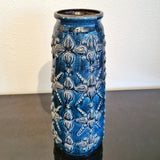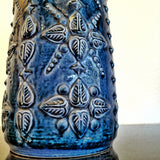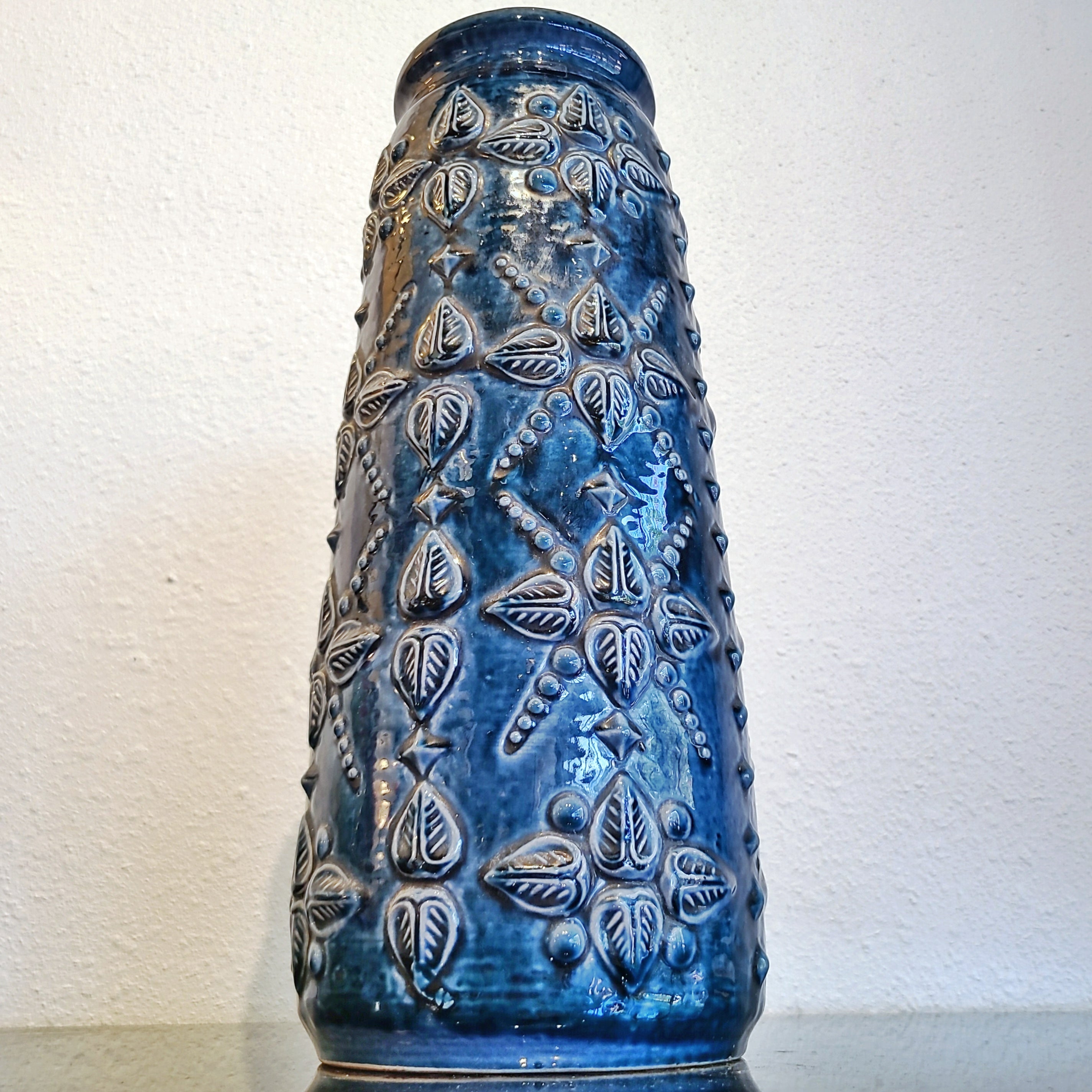
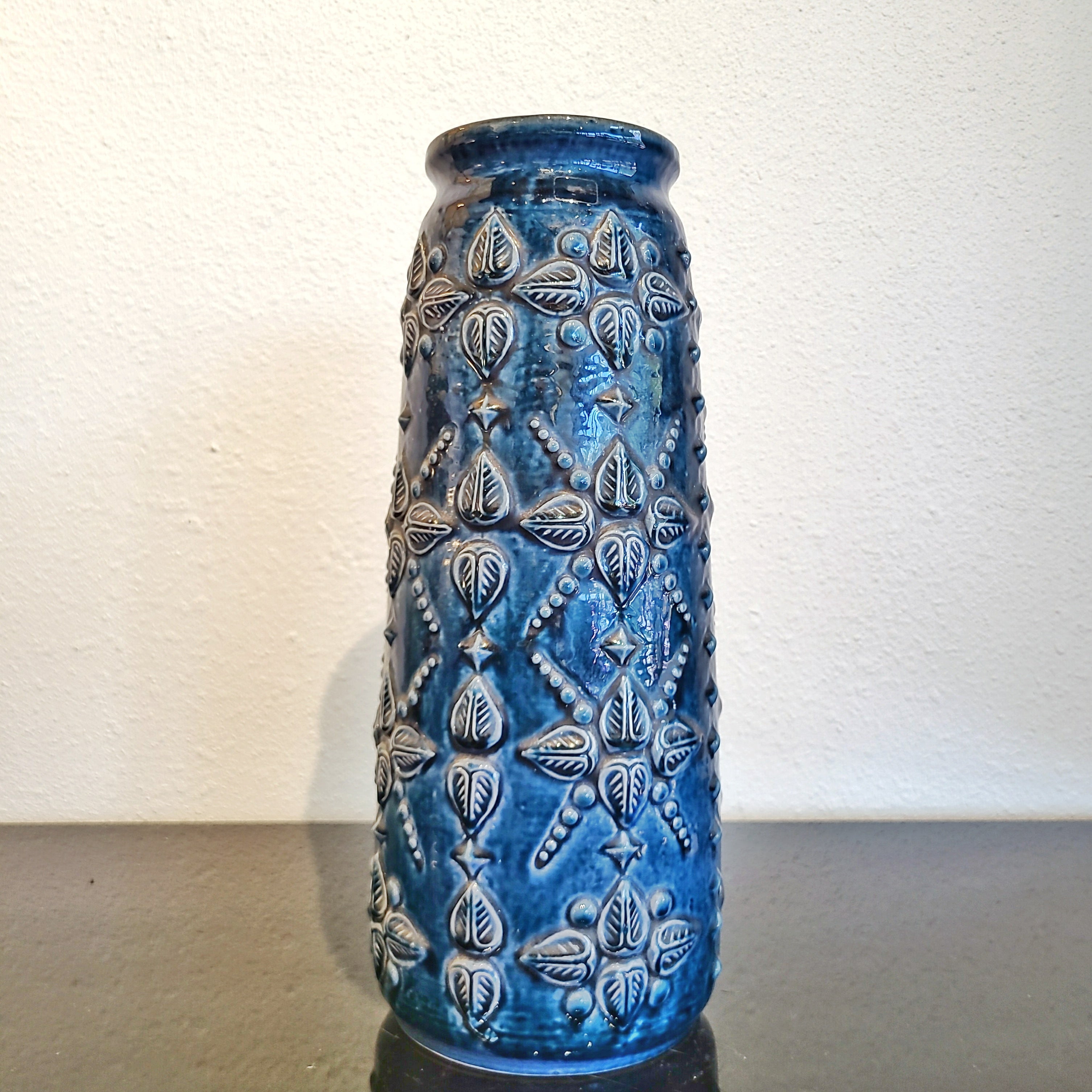
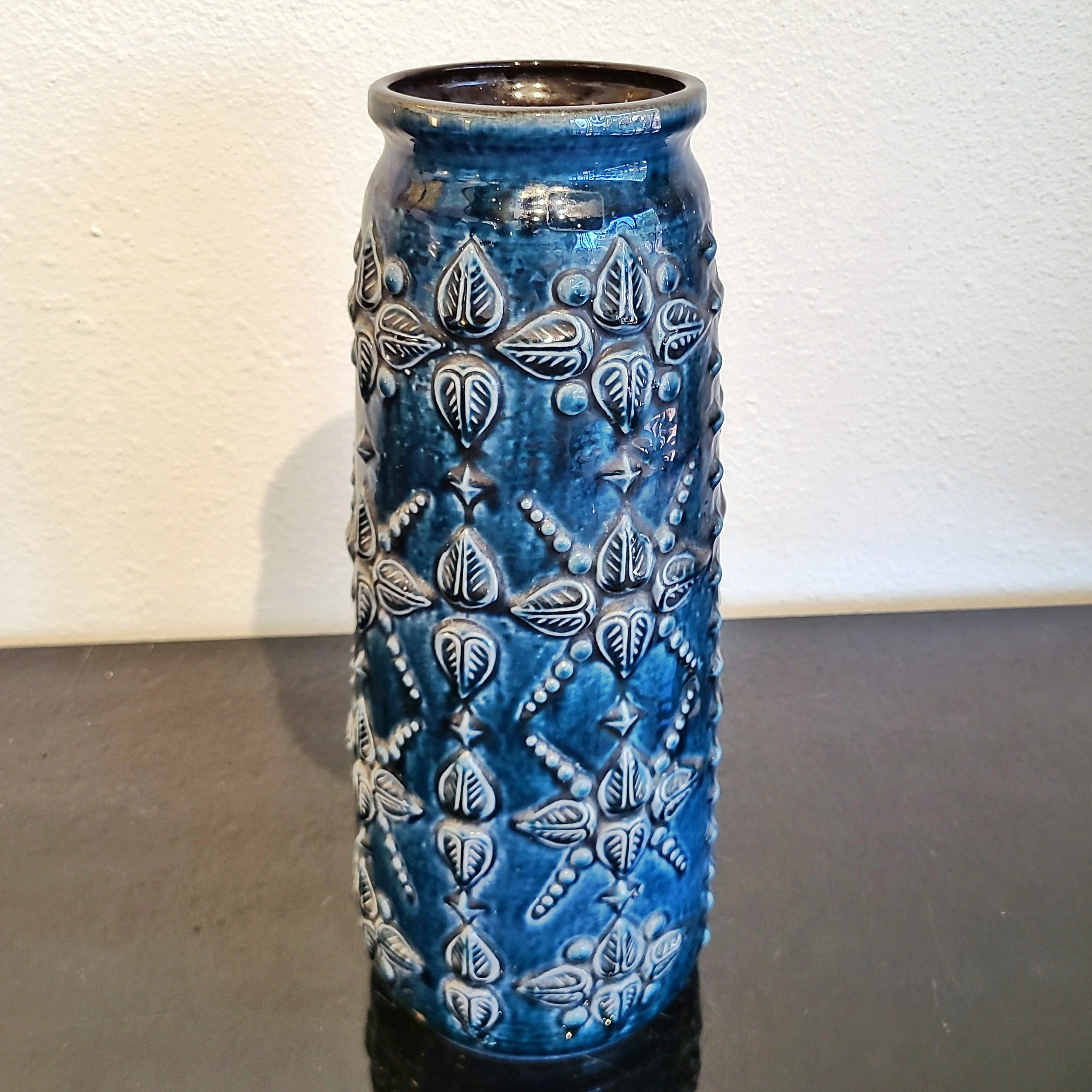
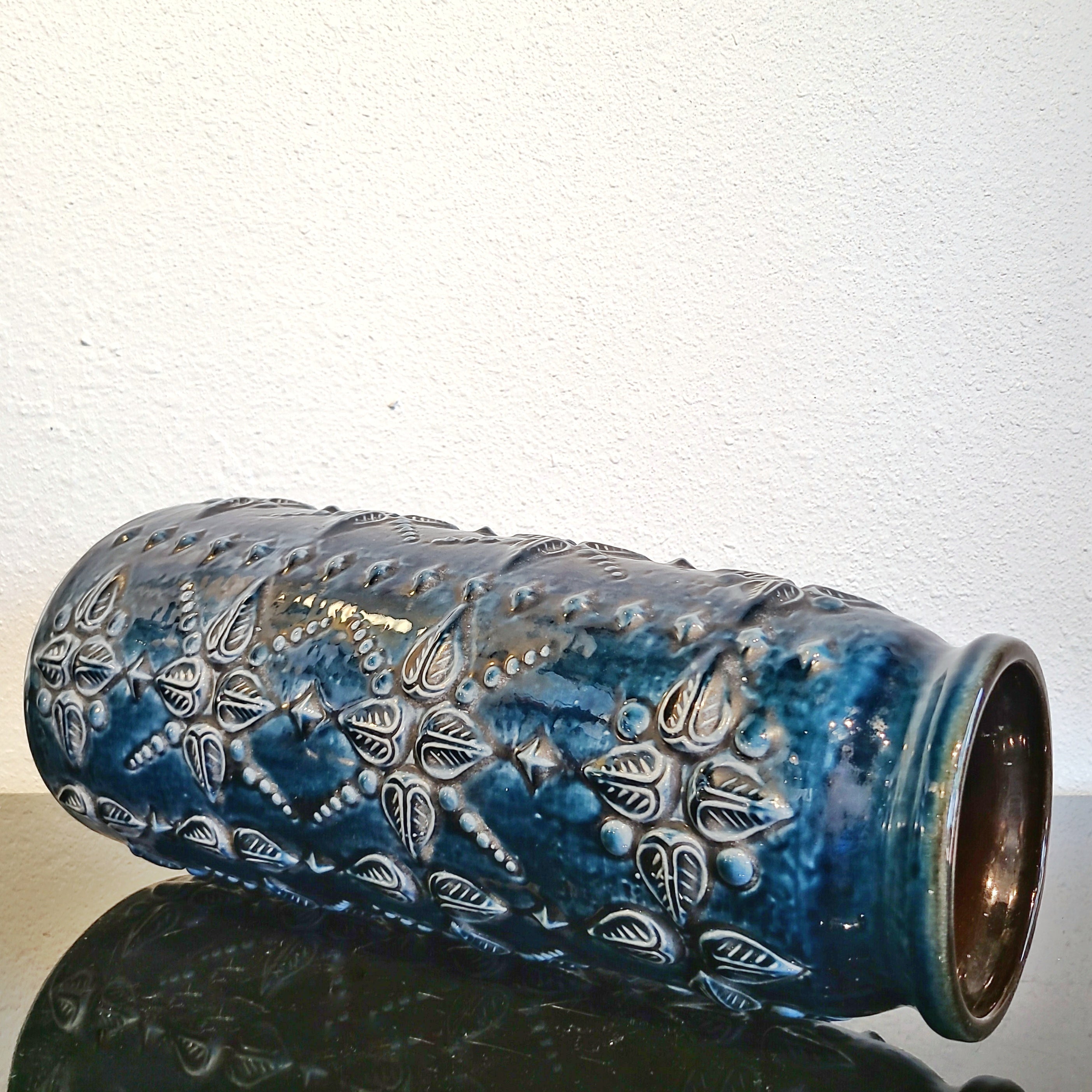
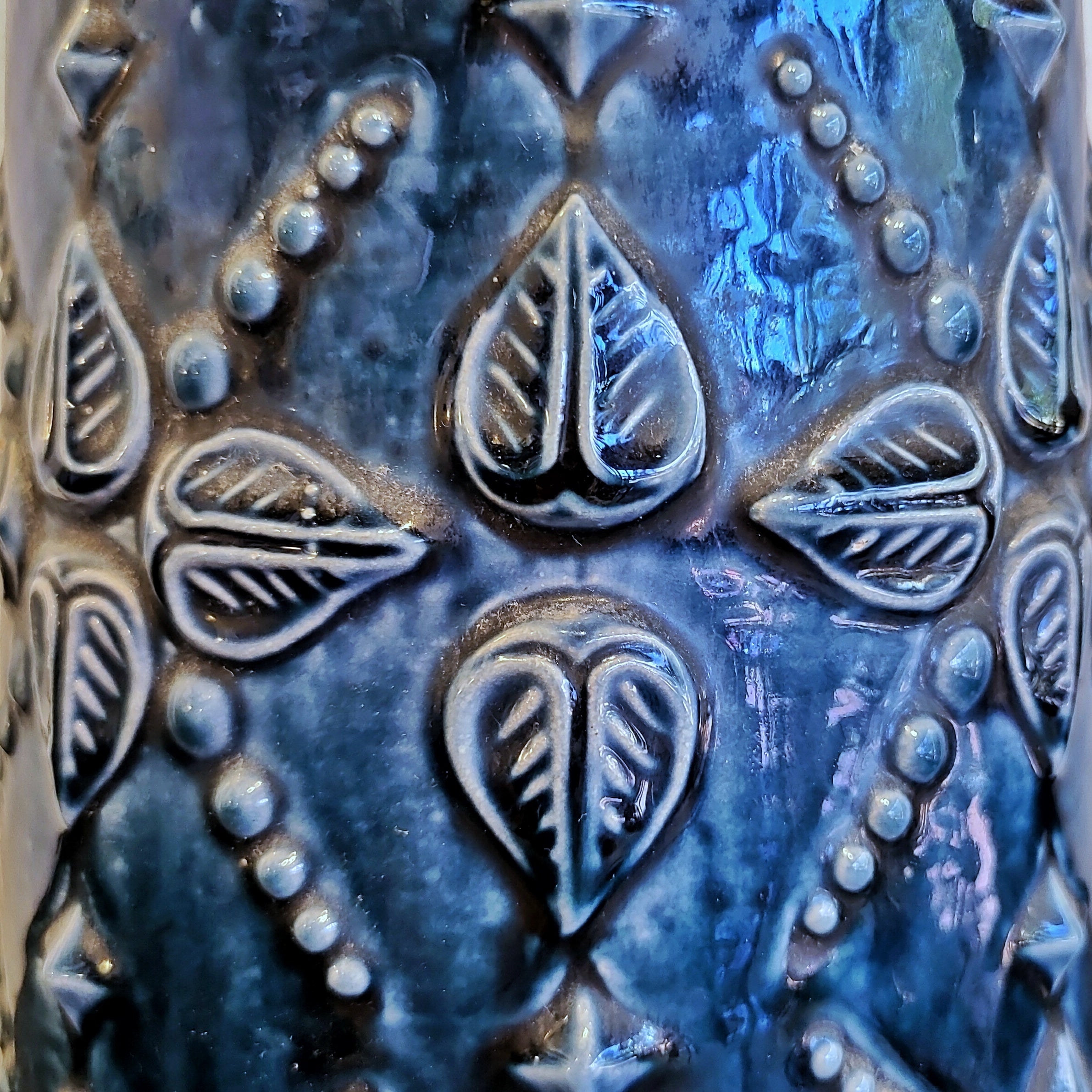
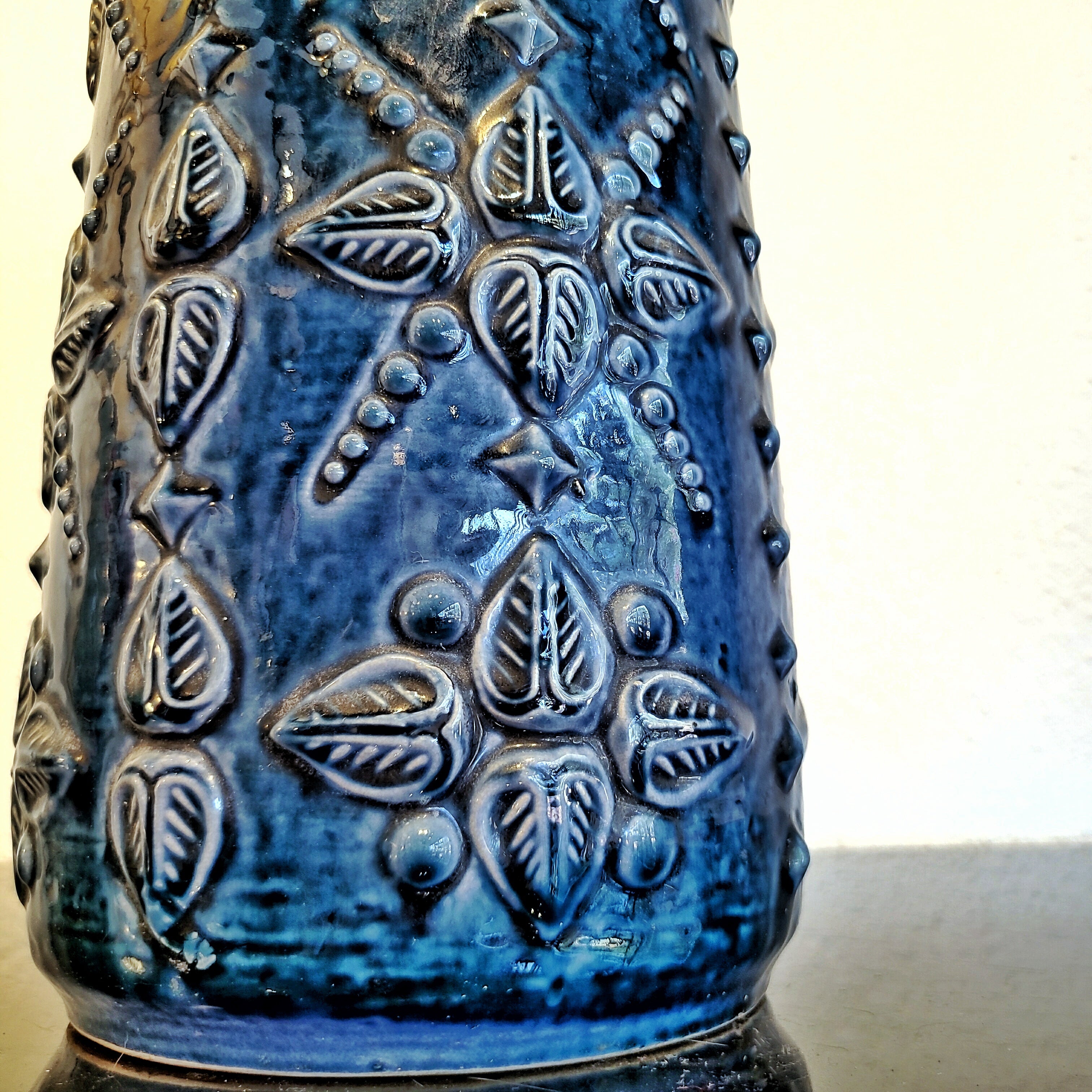
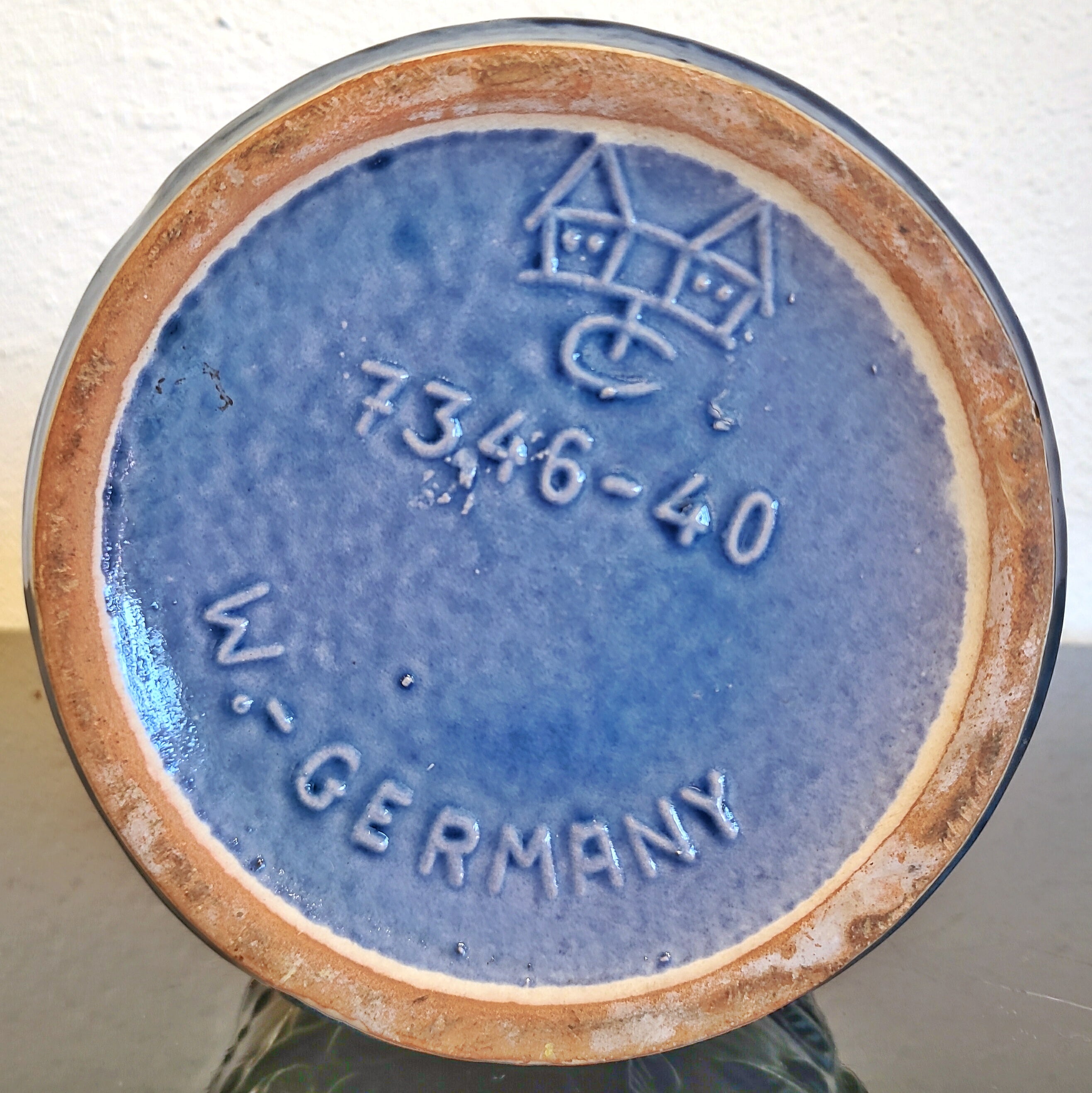
CARSTENS TÖNNIESHOF ‘RELIEF’ SERIES FLOOR VASE Nr. 7346/40
CONTACT US HERE ABOUT THIS ITEM.
A very tall relief décor floor vase Nr. 7346/40 from CARSTENS-TÖNNIESHOF. Probably from the late '60s Europa series designed by the celebrated Heinz Siery
CARSTENS-TÖNNIESHOF was founded in 1946 by Ernst Carstens and his son Christian. The family (which included Christian's namesake uncle, sometimes mistakenly listed as a Tönnieshof cofounder) had a generations-long history of manufacturing porcelain and other ceramics throughout Germany. However, all of its businesses had collapsed by the end of WWII. Most of the factories that had survived were expropriated by the GDR—having wound up on the communist side of the line when the country was divided following the war. Father and son built the new Tönnieshof factory on a farm of that name in the town of Fredelsloh—just across the West German border in Lower Saxony. Very little is recorded about its earliest production, which began in 1947 and consisted mainly of tableware. The first known decorative pieces date from the early '50s. Ernst's wife Trude Carstens served as artistic director for CARSTENS TÖNNIESHOF until her death in 1965.
Early modern CARSTENS-TÖNNIESHOF products had simple forms and were decorated in discrete colors. More advanced décors, with organic patterns and sometimes gold elements, were developed by Trude Carstens in the mid '50s. Good examples of this type are Utrecht and Graz. Forms with molded geometric patterns would soon be introduced, the Carmen relief series from 1958 being representative.
When Ernst Carstens died in 1954, leadership passed to son Christian. Under his guidance the firm maintained its dynamic position in the vanguard of West Germany's ceramics industry. CARSTENS, which employed about 400 workers by this time, would remain successful for decades and produce an enormous variety of shapes and glazes. In step with most of the other major German ceramics companies of its day, CARSTENS' practice was to apply a variety of decoration techniques to the same basic forms. This naturally yielded extensive product ranges. In addition to its own branded pottery, CARSTENS manufactured ceramics for the Austrian firm Goldscheider.
The celebrated Heinz Siery began his work at CARSTENS in 1959. His designs—with their harmonious, "golden-ratio" proportions—were ubiquitous in the company's early '60s production, and indeed, throughout its remaining history. Of special note is the original Atelier series, developed by Siery (forms) along with Gerda Heuckeroth (décors) and released in 1962. The two are together responsible for some of CARSTENS' most coveted creations.
Helmut Scholtis (listed as "von Scholtis" in much of the literature), during a stint with CARSTENS in 1963, unveiled the hugely popular Ankara décor. An outstanding example of "wax resist" technique, it was applied to a broad array of forms and can be found in a variety of color and shape permutations. Ankara remained in continuous production until 1969.
Dieter Peter and Rudolph Christman came up with several advanced, eccentric forms in 1967 and paired them with sophisticated "fat lava" glazes for the high-end Luxus series. It was followed in 1968 by Gerda Heuckeroth's Boutique series. The two lines were produced to be sold exclusively in large department stores and comprised some of CARSTENS' most labor-intensive and costly items to produce.
CARSTEN's production was eventually expanded to Austria and overseas to Brazil, Chile, Argentina, and Australia. It may well have topped out at close to 10,000 units daily overall. By the mid 1970s, however, the profitability of the ceramics industry was being undercut by cheap imports and lagging public interest. CARSTENS went bankrupt in 1977. It was taken over by employees for a time and operated under the name Kiel Atelier; all operations ceased in 1984.
KEY DESIGNERS:
- Trude Carstens, 1946–mid '60s
- Heinz Siery, 1959–1967
- Gerda Heuckeroth, 1962–1964
- Dieter Peter, early '70s
- Rudolph Christman, 1967–1968
- Helmut Scholtis, 1960s
HEINZ SIERY was a true luminary in the world of ceramics in the '50s and '60s. His form designs had significant impact on the product styles of makers Fohr, Scheurich, CARSTENS, and Ruscha, among others. Siery often employed "the golden ratio" (or an approximation) while designing, lending harmonious proportion to his work. This can be clearly seen in his most iconic vase, Nr. 271/22 for Scheurich. Presented in 1959, it was extremely popular and was still being manufactured in the 1970s. Siery also developed and introduced new methods of industrial organization.
In 1969 Siery and wife, Ingrid Siery-Illgner, established a jointly operated studio, Atelier Syré, near the historic town of Euskirchen in North Rhine-Westphalia out of which they both freelanced. (Ingrid had also designed decorative objects for CARSTENS, and overseen the design department at the Wächtersbach earthenware factory.) In addition to commissioned work, the couple produced creations of their own—notably elegant, figural sculptures made of bronze, whose simple, classical forms and sleek lines evoke the work of Henry Moore and Joannis Avramidis. Atelier Syré houses a sculpture park that is home to more than 300 of these works.
DETAILS
Maker – CARSTENS TÖNNIESHOF
Production Period/Year – 1960s
Designer – HEINZ SIERY
Design Period/Year – 1960s
Origin – WEST GERMANY
Styles/Movements – MID-CENTURY MODERN; BOHO CHIC
Materials – CERAMIC
Colors – BLUE
Condition – Excellent vintage condition; no damage. May show some signs of previous use.
Dimensions – 6 ½" DIAM. × 15 ¾" H


